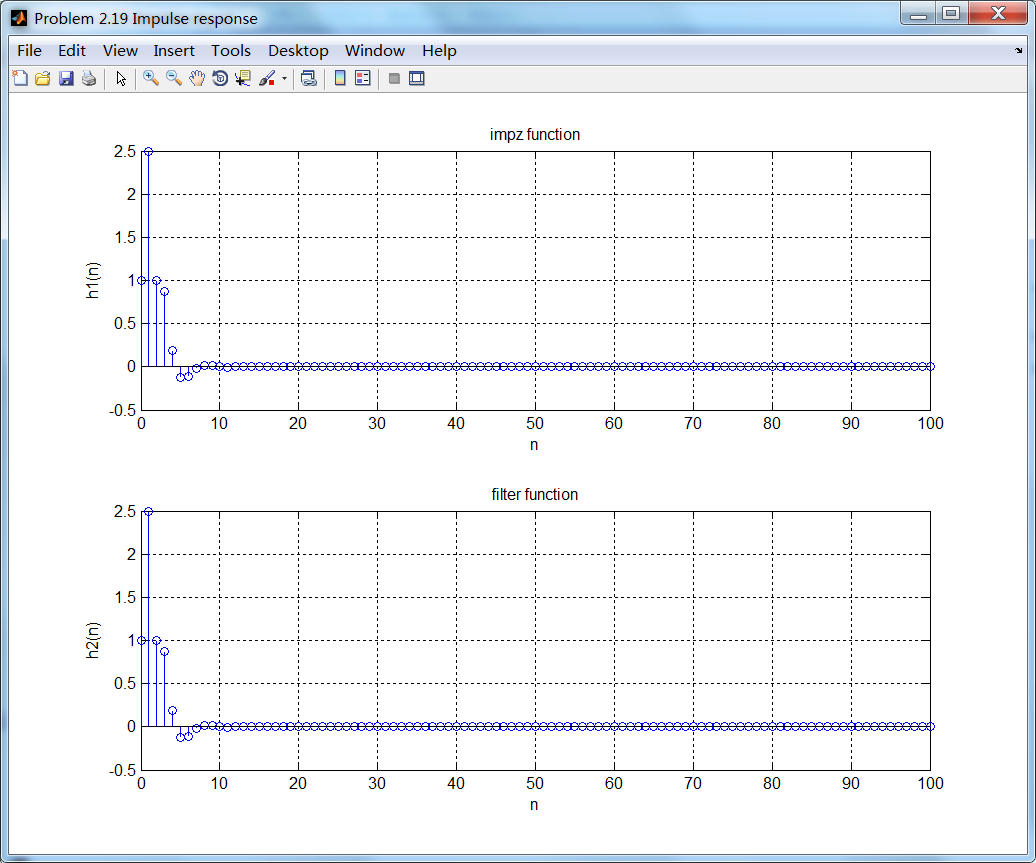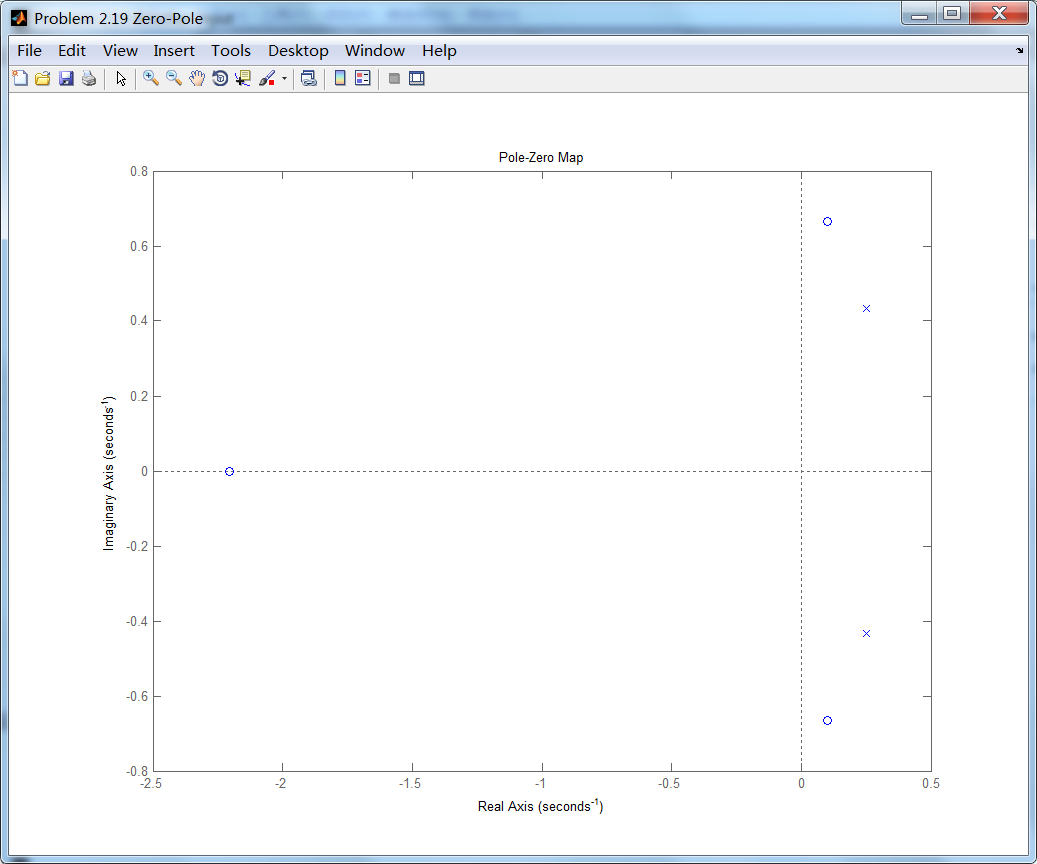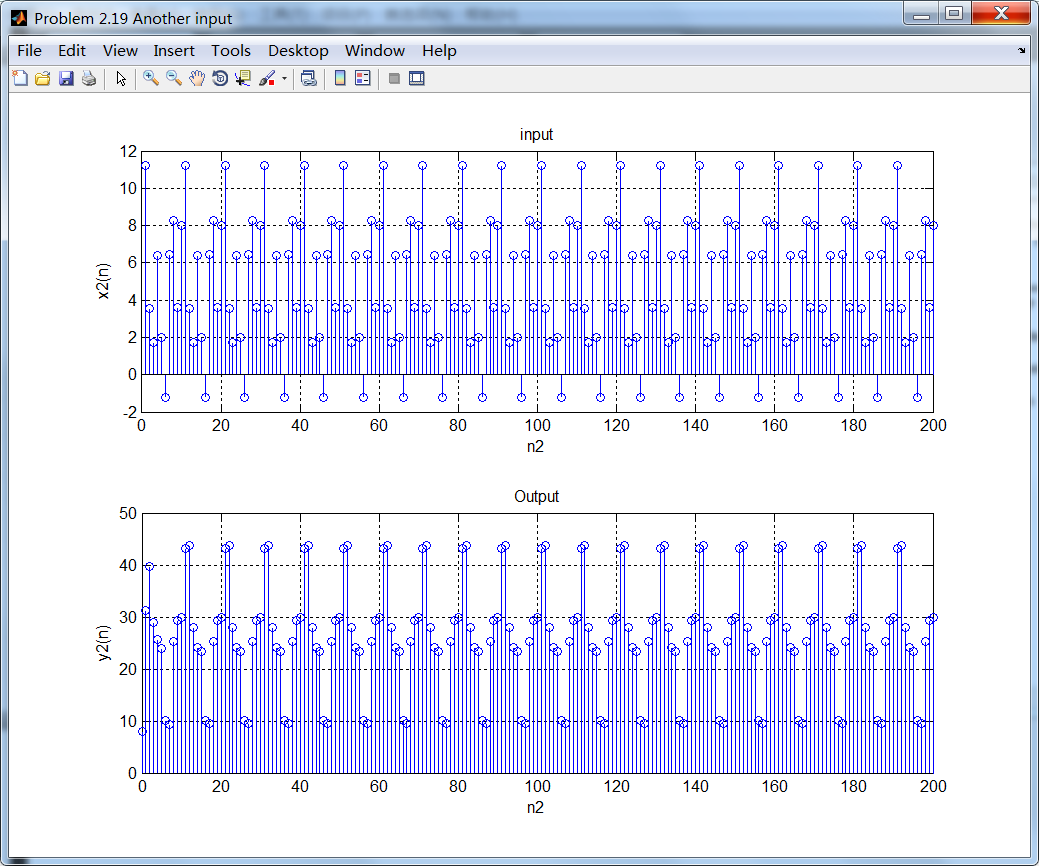
代码:
%% ------------------------------------------------------------------------
%% Output Info about this m-file
fprintf('
***********************************************************
');
fprintf(' <DSP using MATLAB> Problem 2.19
');
banner();
%% ------------------------------------------------------------------------
b = [1, 2, 0, 1]; a = [1, -0.5, 0.25];
n = [0:100];
h1 = impz(b, a, n);
x = impseq(0, 0, 100);
h2 = filter(b, a, x);
figure('NumberTitle', 'off', 'Name', 'Problem 2.19 Impulse response')
set(gcf,'Color',[1,1,1]) % 改变坐标外围背景颜色
subplot(2,1,1); stem(n, h1); title('impz function');
xlabel('n'); ylabel('h1(n)') ;
grid on
subplot(2,1,2); stem(n, h2); title('filter function');
xlabel('n'); ylabel('h2(n)');
grid on;
%% ---------------------------------------------
%% stability
%% ---------------------------------------------
fprintf('
1st impz : sum(abs(h)) = %f
', sum(abs(h1)));
fprintf('
2nd filter: sum(abs(h)) = %f
', sum(abs(h2)));
figure('NumberTitle', 'off', 'Name', 'Problem 2.19 Zero-Pole')
set(gcf,'Color',[1,1,1]) % 改变坐标外围背景颜色
pzmap(b, a);
z = roots(a); magz = abs(z)
%% --------------------------------------
%% another input
%% --------------------------------------
n2 = [0:200];
x2 = (5 + 3*cos(0.2*pi*n2) + 4*sin(0.6*pi*n2)) .* stepseq(0, 0, 200);
y2 = filter(b, a, x2);
figure('NumberTitle', 'off', 'Name', 'Problem 2.19 Another input')
set(gcf,'Color',[1,1,1]) % 改变坐标外围背景颜色
subplot(2,1,1); stem(n2, x2); title('input');
xlabel('n2'); ylabel('x2(n)') ;
grid on
subplot(2,1,2); stem(n2, y2); title('Output');
xlabel('n2'); ylabel('y2(n)');
grid on;
运行结果:

上图是分别用impz和filter函数得到的脉冲响应序列。

系统的脉冲响应序列是绝对可和的,另外系统的极点都位于单位圆内部(见下图),所以系统是稳定的。

给系统一个新的输入,计算新的输出,如下图:
